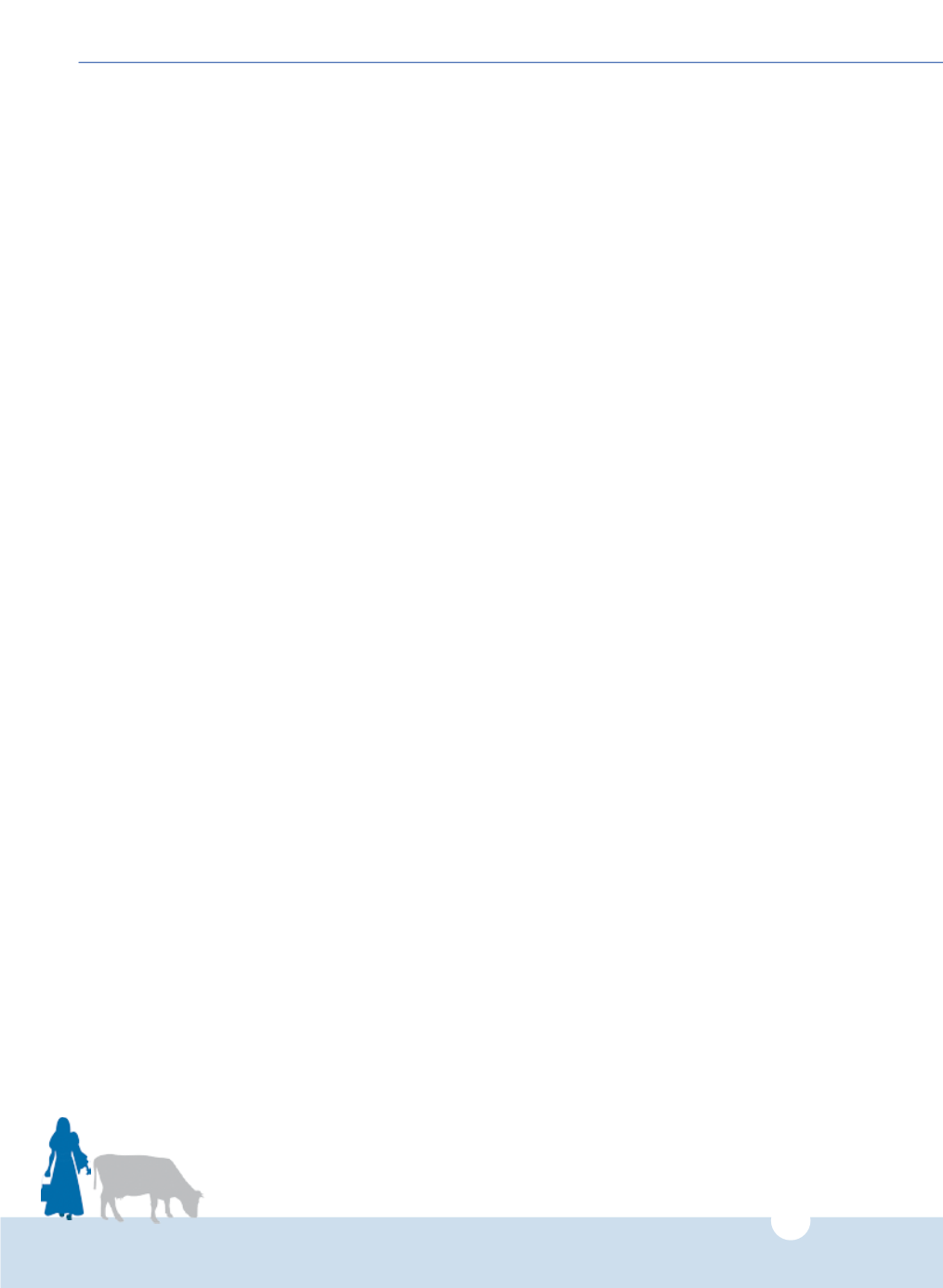

112
FREQUENTLY ASKED QUESTIONS– ANIMAL NUTRITION
Question:
What is ration balancing?
Answer:
All species require balanced ration for optimal growth, ration balancing is a process to balance the level
of various nutrients of an animal, from the available resources, to meet its nutrient requirements for maintenance
and production.
Question:
Can we incorporate gram chuni, wheat bran, banana stem, bamboo leaf etc. and other home grown
produce while balancing ration?
Answer:
Yes, home grown produce, tree leaves etc. which are normally fed to animals can be incorporated while
balancing ration. In fact the objective of ration balancing is to produce an optimumquantity of milk at the least cost
frommilch animals by readjusting, wherever required, the proportion of locally available dietary feed ingredients,
so as to provide adequate amount of proteins, minerals, vitamins as well as energy.
Question:
In case UMB is being offered to the animal for licking, how much quantity of urea treated straw should
be fed to animal?
Answer:
UMB and urea treated straw both should not be fed to animal at a time. If UMB is not given, we can offer
urea treated straw to animal to the extent it eats.
Question:
Is cattle feed requited if we feed urea treated straw to the animal?
Answer:
In case animal is neither pregnant nor lactating and is getting sufficient urea treated straw or ordinary
straw along with UMB lick, cattle feed is not required. But for lactating and pregnant animals, cattle feed/bypass
protein feed should also be fed along with urea treated straw as per recommendation made earlier in this booklet.
Question:
Do we need to provide extra mineral mixture when we are feeding balanced cattle feed to animals?
Answer:
As balanced cattle feed contains mineral mixture, we can reduce the recommended quantity of mineral
mixture to 50%.
Question:
What should we do if the animal does not lick urea molasses block?
Answer:
Tomake the animal habituated to licking UMB, sprinkle flour, bran or cattle feed on the block for few days.
Animal will start relishing it gradually.
Question:
For how many days does one urea molasses block last?
Answer:
One urea molasses block weighing 3 kg lasts for 5-7 days for one animal
FREQUENTLY ASKED QUESTIONS– ANIMAL BREEDING
Question:
Why is improvement of indigenous breeds important? What are important indigenous breeds and
where are they available?
Answer:
Indigenous breeds are well adapted to our agro-climatic conditions and are resistant to many tropical
diseases and can survive andproducemilk onpoor feed and fodder resources. Some of these breeds arewell known
for their high milk and fat production. However, the production potential of these animals has deteriorated over
a period of time due to lack of selection. The high producing exotic breeds do not have the above characteristics
and are very difficult to manage in tropical Indian scenario. Hence, indigenous breeds should be improved. Please
see the inside covers for the various indigenous milch breeds of cattle & buffalo and their native breeding tracts.
Question:
Which is most suitable animal for Dairying – indigenous cattle, crossbred cattle or buffalo?
Answer:
Choice of breed or breed combination primarily depends on resource availability, climatic conditions,
availability of required inputs (feed and healthcare facilities), availability of market for milk, criteria for milk pricing
etc. In resource poor situations, indigenous cattle and/or buffaloes could be preferred while with moderate to
good resources crossbred cow could be preferred. Places where fat % is the price criteria, buffaloes may be
preferred.



















